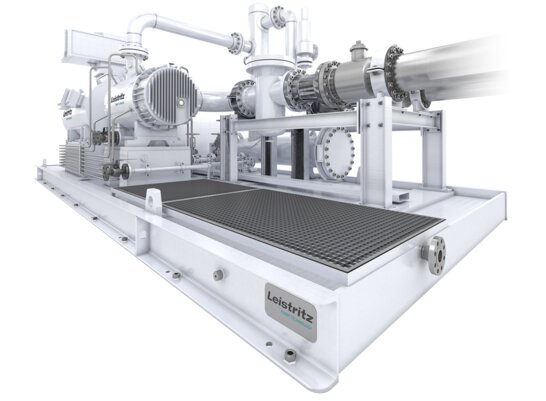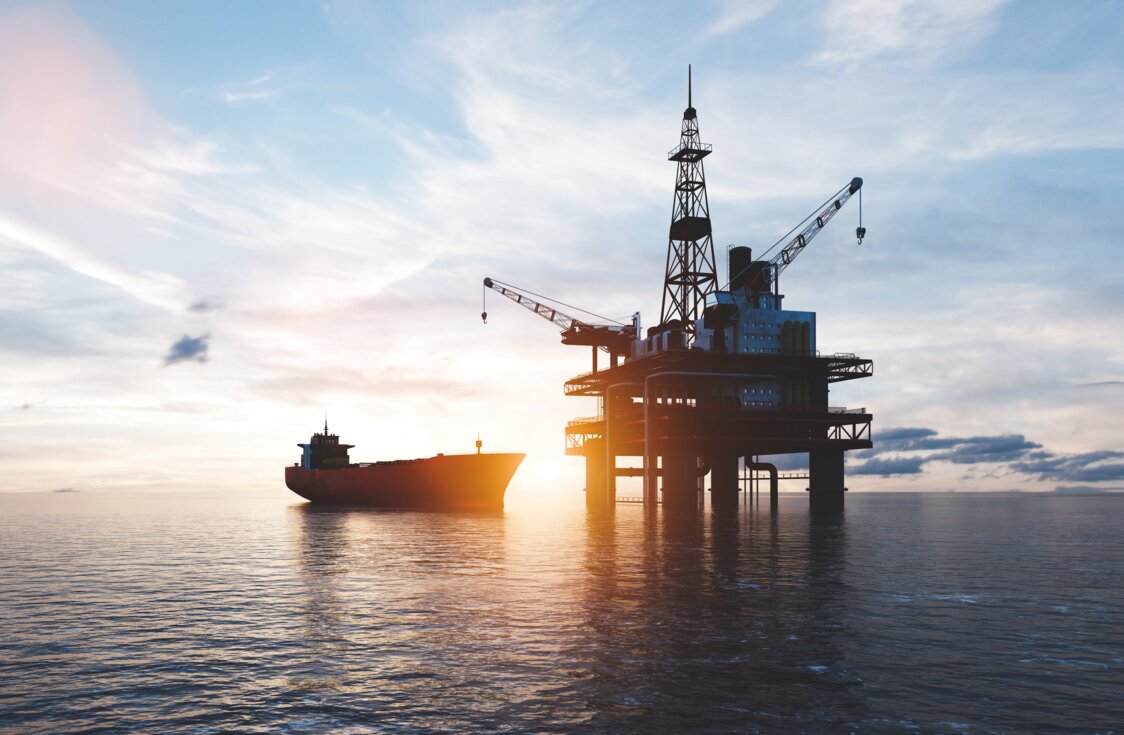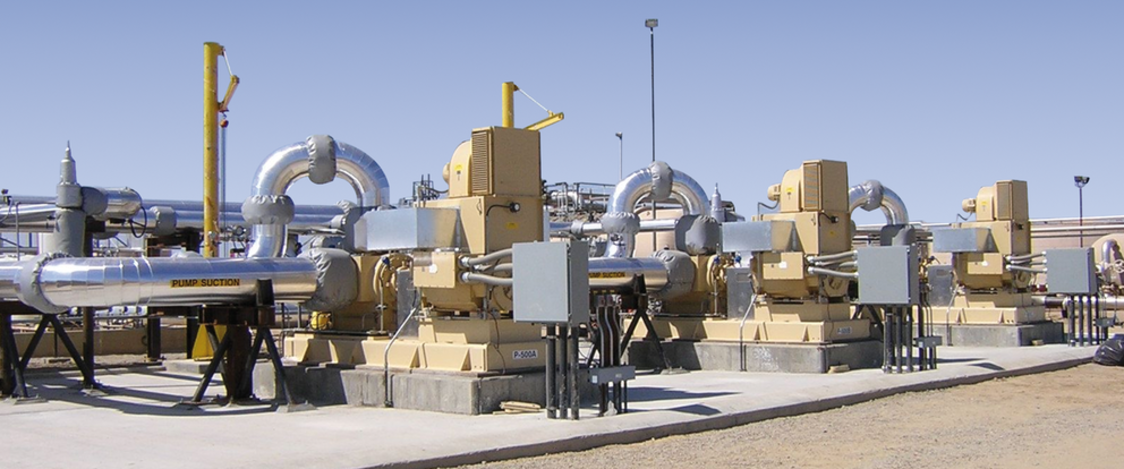Efficient technology for oil and gas production
Leistritz Multiphase pump systems are in operation worldwide. They are designed for running with high gas volume fractions (GVF) and gas bubbles with up to 100% gas content as well as for capacities of up to 5,000 m³/h and differential pressures of up to 150 bar. In comparison with traditional upstream installations, multiphase pumps need neither space-intensive separation devices at the borehole nor separate pumps, compressors or pipelines to transport gas and fluid to the central collection areas.

Multiphase pumps are a cost-effective technology for the transportation of multiphase fluids using just a single pipeline - instead of separating the oil, water and gas at the collection areas and exporting the oil and gas to the central production facilities via separate pipelines.
In general, multiphase pumps are a way to accelerate the unprocessed gas/fluid mixture. They also allow to transport these mixtures over large distances without phase separation beforehand.
Separators, crude oil refining facilities, pumps, compressors and storage tanks at the collection area for the oil fields become superfluous thanks to the direct pumping of the multiphase fluid to central processing facilities.
Further information
Next Generation Multiphase Pumps Technology (Report from Global Business Media)
Multiphase pump skid with L4 screw pump
Application areas
Offshore Multiphase Systems
Limited installation space, harsh weather conditions, the long distance to the central facilities - these are just few points which make offshore oil production a challenge. The pumps used here must reliably stand the test in view of material and performance. The application of multiphase systems here is an economical and efficient solution. Separators, crude oil refining facilities, pumps, compressors and storage tanks at the collection area become redundant thanks to the direct pumping of the multiphase mixture to the central processing station.

Onshore Multiphase Pump Systems
Multiphase pumps are successfully used for onshore applications around the world. The technology has become firmly established among the global oil and gas producers since it allows production to be maintained on small oil fields with declining production as well as making the reduction of the flaring of petroleum gas possible as a contribution to a clean environment.
